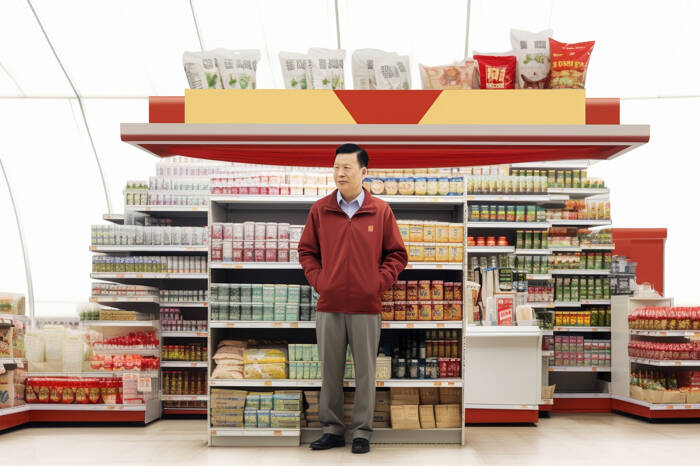
Manufacturing Sector Under Pressure
The S&P Global China General Manufacturing PMI (formerly the Caixin Manufacturing PMI) fell from 50.4 in June to 49.4 in July, crucially dropping below the neutral 50 level. Falling new export orders and weakening domestic demand led manufacturers to cut staffing levels as rising cost pressures impacted profit margins. Increased competition has pressured manufacturers to slash prices while input prices trended higher in July. That squeeze is now rippling into households.
Consumer Sentiment and Spending
The latest surge in youth unemployment may pressure consumer sentiment further as the economy loses momentum. Rising unemployment and waning consumer sentiment could undermine Beijing’s efforts to boost household spending. Notably, retail sales rose 3.7% year-on-year in July, down sharply from June’s 4.8% increase, despite government efforts to boost spending. Beijing is racing to catch up.
Beijing’s Policy Response
Despite rising unemployment and softer household spending, Beijing remains focused on boosting domestic consumption. This week, China’s premier Li Qiang held a meeting on the economy, resulting in fresh stimulus pledges. China’s premier vowed to boost spending, stabilize the housing market, and address labor market strains.
Addressing youth unemployment could be pivotal given July’s record number of graduates. Beijing could incentivize firms to hire young people and roll out labor reforms aimed at creating opportunities for school leavers. Still, not all sectors are struggling—the services industry shows signs of life.
Services Sector Resilience
Notably, the S&P Global China General Services PMI rose to 52.6 in July, up from 50.6 in June. Service providers increased staffing levels at the most marked rate since July 2024 on a sharp upswing in new work. July’s private sector PMI trends suggested that China’s transition toward a consumption-led economy had gained traction.
Tackling youth unemployment and addressing housing sector woes could lift consumer sentiment. Improving sentiment and less reliance on trade may revive household spending and potentially deliver the 5% GDP growth target.
Economic Outlook and Risks
Natixis Asia Pacific Chief Economist Alicia Garcia Herrero recently remarked on the need for more government support, stating:
“China can reach its 2025 growth target but with even more stimulus and the second half will be tougher. All in all, while the Chinese economy has a greater likelihood of meeting the government’s growth target, there are significant uncertainties down the road. Despite foreseeable headwinds from trade friction and persisting deflation, the government does have more bullets for further stimulus if needed. Therefore, we have revised our forecast of China’s GDP growth to 5% for 2025 and 4.5% for 2026.”
Mainland Stock Markets Hit Year-to-Date Highs on Stimulus Hopes
On Thursday, August 21, Mainland China’s CSI 300 rallied to a new 10-month high, while the Shanghai Composite Index struck a new 10-year high. Thursday’s gains underscored investor optimism over Beijing introducing a wave of support measures to bolster the economy.
However, the CSI 300 and the Shanghai Composite Index remain well below their all-time highs, highlighting retail investor caution. Nevertheless, Mainland China’s equity markets look set to extend their winning streaks to four months in August. An active equity market eyeing historical highs could boost consumer sentiment, particularly if Beijing successfully resolves the housing crisis.
Equity Market Impact on Confidence
Leading economist Hao Hong recently commented on the equity market trends and stimulus hopes:
“China making new decade high, but retail participation is measured, unlike the sharp but transient rally last Sept. As growth slowing, market is betting on renewed policy support. Liquidity is abundant and helps support the market.”
He also highlighted the potential significance of the current market recovery on consumer sentiment, stating:
“There is no quick fix to boosting household confidence, except for a stock market rebound.”
Despite the 90-day trade war truce and existing tariffs on Chinese goods, Mainland equity markets could boost consumer sentiment:
- CSI 300: +5.66% in August, +9.47% YTD.
- Shanghai Composite: +5.89% in August, +12.90% YTD.
- Hang Seng Index: +25.42% YTD, outperforming both Mainland equity markets and the Nasdaq (+9.64% YTD).
While trade headlines will continue to influence market sentiment, Beijing’s next stimulus measures remain key. However, delays in policy support or weaker data could threaten to end the rally.
Comments
This site uses User Verification plugin to reduce spam. See how your comment data is processed.